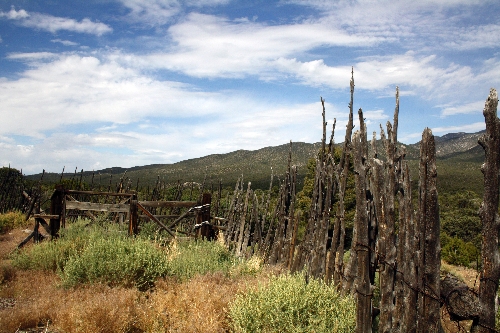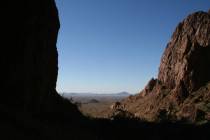Savor extra solitude on Mormon Well Road
One benefit of living in Southern Nevada is the opportunity to explore little-traveled back roads winding their way to uncrowded outdoor adventures. It's too bad that heat discourages this activity in deep summer, but even then, you can have a great time if you prepare carefully, start early in the day and choose the right road.
One of the best for a summer jaunt is the Mormon Well Road, originally a pioneer wagon trail on what is now the 1.5 million-acre Desert National Wildlife Refuge. This gravel road starts about 26 miles north of Las Vegas, four miles east of U.S. Highway 95 near the refuge's Corn Creek Field Station. About 43 miles of this trail will bring you across the scenic Sheep Range to exit on U.S. Highway 93, the road to Alamo and points north, just a couple of miles south of state Route 168.
The road starts at an elevation of about 3,000 feet and climbs to 6,600 feet at its summit. Along the way, you will cross vast valleys full of yucca and Joshua trees, pass a limestone canyon and numerous caves, view agave roasting pits and pass by a picnic and camping area. If you are willing to take a short hike, you also can visit an old corral built by pioneers and see a natural spring.
About seven miles from Corn Creek Field Station, keep your eye out on the left for agave roasting pits. Without even getting out of your vehicle, you can see three about 100 yards from the road. These large, circular pits, which are mounded with limestone rock, were used by American Indians to slow-cook food. If you decide to walk out for a closer look, be careful not to step on or inside of the pits as these are fragile archaeological sites.
Continuing on the road, about 16 miles into the drive you will enter Peek-a-boo Canyon. There are many small caves throughout this limestone canyon and one large one up on the cliff face on the right side. There's a path to the cave, but if you have children along, be aware that there are high drop-offs near the cave entrance. This cave has two sections, the largest about 30 feet deep.
About 28 miles from Corn Creek, you will reach the Desert Pass area, which has a picnic and camping area and an enclosed restroom. Each tent site has a cleared pad, a cooking area and picnic table. There also are group sites. This is an especially good summer camping spot, cooled not only by an elevation of about 6,600 feet but also by its surrounding woodland of Utah junipers, pinyon and ponderosa pines. When I traveled Mormon Well Road two weeks ago, wildflowers still bloomed in this higher part, including Arizona firecracker, Indian paintbrush and prickly pear cactus.
A couple of miles farther, look for two small vehicle pullouts on the right. A wire-and-pipe barricade blocks driving into this now-abandoned side road but it's a good place for a short hike. Just follow the old road for about 250 yards and then go left up another steeper abandoned road for about 200 yards. Here you will find a pioneer corral, built of juniper logs in the early 1900s. On its far side against the hill, you'll find a natural spring. It's an important water supply for area wildlife, so don't linger there so long as to discourage any critters waiting to drink.
Back on Mormon Well Road, traveling about 3½ more miles will bring you to a large wash and road on your left, the mouth of Sawmill Canyon, where early settlers from Moapa Valley used to cut ponderosa timber. Mormon Well Road heads east from here and descends about 11 more miles to Highway 93, entering where the power lines cross. Making a right turn here and driving 29 miles south will bring you to Interstate 15. On I-15, it's about 20 minutes to Las Vegas.
This trip requires a high-clearance vehicle with good off-road tires and four-wheel drive. Cell phones do not work here, and if you get stuck, it can be days before anyone else happens along. Prepare especially well, with enough emergency water and food for a few days, at least one good spare tire, a jack and a lug wrench.
Some of the road travels desert washes, so if it's raining or threatens to, put this trip off to another day. And when you take it, just for maximum pleasure, start as early as you can in the morning, when the sun lies low and shadows stretch long and cool into the kingdom that is today.
Deborah Wall is the author of "Great Hikes, A Cerca Country Guide" and "Base Camp Las Vegas: Hiking the Southwestern States," published by Stephens Press. She can be reached at deborabus@aol.com.
DIRECTIONS
From Las Vegas, go north on U.S. Highway 95 for about 26 miles. Go right onto Corn Creek Road and follow it for about four miles to Mormon Well Road.




























